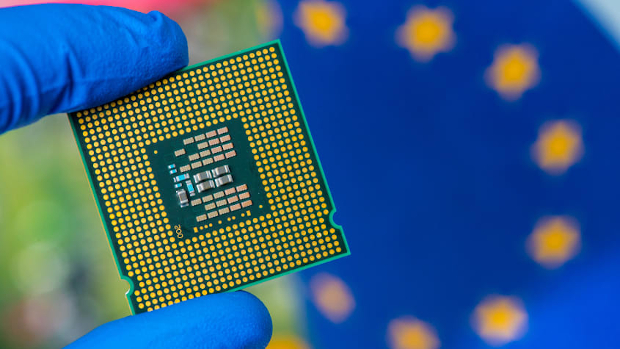
The coming chip glut
Despite the global push for sustainable energy, including tensions over nuclear power with Germany seeking to get rid of it entirely while France pushes to have it declared green, one part of the energy sector has boomed while others have slipped. That sector is oil and gas.
As you may remember, oil prices plunged into the negative during the early days of the Covid-19 pandemic. Naturally, oil companies’ share prices tanked with them, but today the sector is in rude health. Exxon Mobil’s share price is up almost 59% in the past 12 months, while competitor Chevron has risen almost 50%. Despite rising energy prices driving profits, it would take a brave investor to wade into the oil fields right now, though, as those highs will almost certainly be followed by declines.
Such is life in the primary industries: commodities like oil always seem to operate in a boom or bust cycle, with a real disconnection between supply and demand. Others can be a little more stable, but even copper and timber saw price explosions after lockdowns halted all manner of both primary and secondary industry.
Perhaps we should add CPUs to that list. OK, obviously no matter how commoditised they have become, CPUs are not actually commodities, but they do display at least two characteristics of a commodity. Firstly, they are an integral component of other things. Secondly, prices, and with them production, routinely see-saw.
Today, we are in the middle of a shortage, with knock-on effects including a decline in car sales, game console production, and even sales of medical devices, as manufacturers simply can’t get the components they need.
Plenty of commentators have, including yours truly, have had a lot to say about chips of late, the problems it causes, and how to combat it. For example, despite the impressive rise of Nvidia and AMD, as well as Apple’s in-house silicon design, the massive capital investments of the kind being made by Intel – new plants in Germany and Ohio in the US – are what is really needed to increase production.
Interestingly, a recent report found that chip start-up funding has hit all time highs, noting an S&P Global Market Fund reported 2021 saw $19.4 billion (approx. €16.99 billion) poured into new silicon designs, with China, in particular bunging money into prospects in the sector. Investment is welcome, but is it going to the right place? A US Department of Trade report indicates that, from mid-2020 and throughout 2021, semiconductor fabs operated at over 90% capacity, “which is incredibly high for a production process that requires regular maintenance and very high amounts of energy”, and yet still failed to meet industry needs.
Politics is a major factor in the turning on of the funding tap: as society is increasingly digital, control of the underlying hardware is an issue as much of sovereignty as balance of trade. This is why US president Joe Biden responded to the seemingly endless silicon shortage by demanding, via secretary of commerce Gina Raimondo, that congress approve an investment of $50 billion (approx. €43.78 billion) to increase domestic production capacity. The EU, meanwhile, has earmarked €145 bn for development of new CPUs, including new 2nm processes.
Predictions for the date when the shortage will end vary. Ford, GM and Hyundai, all of whom have seen car production slow as a result of chip scarcity, expect things to get back to normal real-soon-now. However, in a recent investor call Reinhard Ploss, chief executive of Siemens chip spin-off Infineon, a major supplier to the automotive sector, said shortages would “persist well into 2022”.
Still, given the money being pumped into chip manufacturing, the shortage will eventually end. But then what?
Phelix Lee, an analyst at investment research firm Morningstar, recently said that the shortage will likely go on for a few years, but there was a risk that it could turn into a glut by 2024.
It wouldn’t be the first time: boom and bust cycles are the industry norm rather than the exception, with wild swings in both availability and price. One question, then, is could chip supply and demand be managed better? However, a deeper unknown also lurks: are we making the wrong chips?
Investment in leading edge processes, such as the EU’s plan for 2nm chips, is important for future-proofing, but right now older, lower density CPUs are what is in short supply. Interestingly, Apple has already made this clear. In 2021, chief executive Tim Cook told CNBC the company’s biggest issue was a shortage of “legacy nodes”.
In particular, Internet devices, embedded controllers and, most of all, the automotive industry need 40nm chips, and a rush to the newest, densest processes does nothing to address this. Before worrying about control of the technologies of tomorrow, perhaps we should sort out the supply of those needed today.








Subscribers 0
Fans 0
Followers 0
Followers